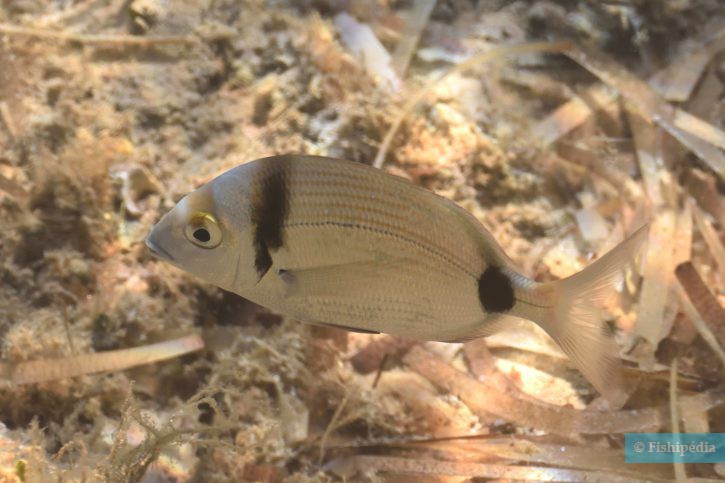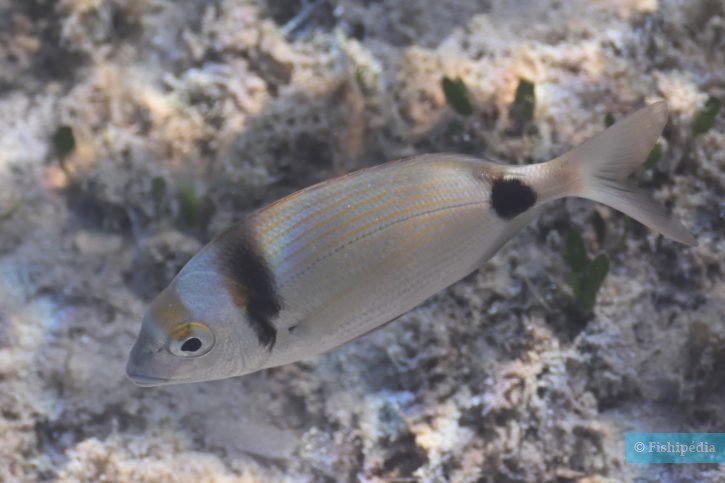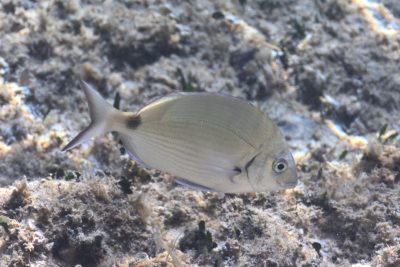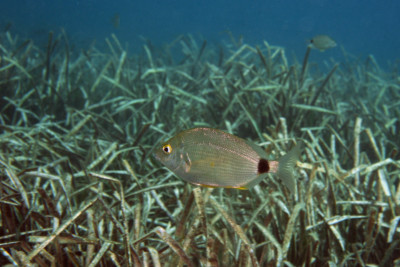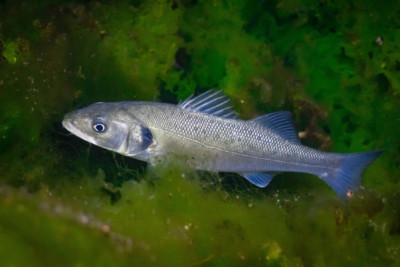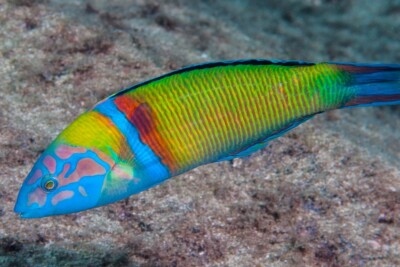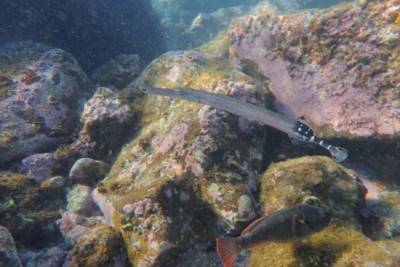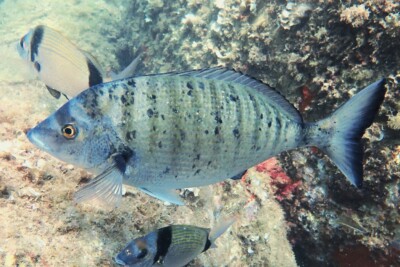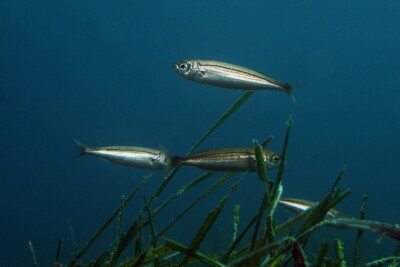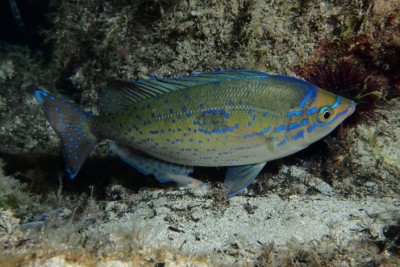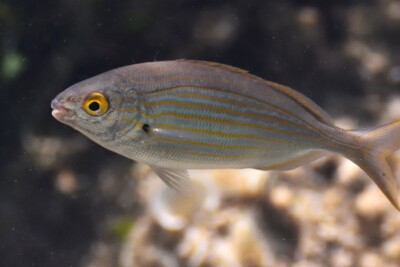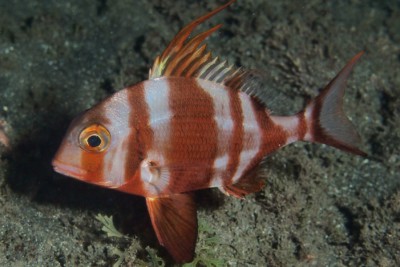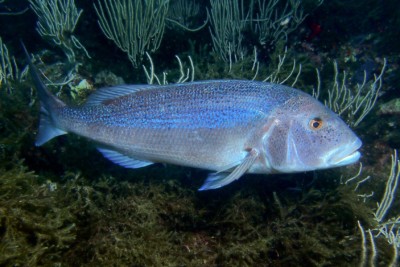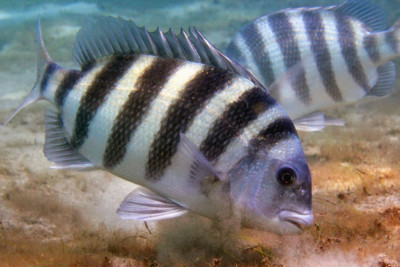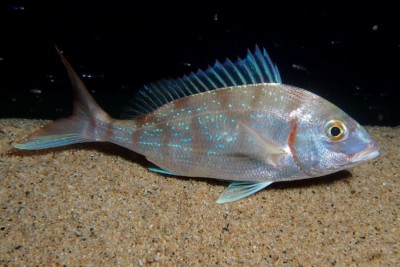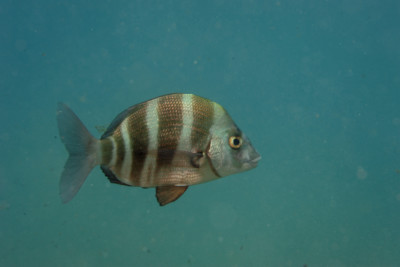common two-banded seabream
| Scientific name | Diplodus vulgaris |
|---|---|
| Descriptor | Geoffroy Saint-Hilaire |
| Year of description | 1817 |
| IUCN category (World) | LC |
| Family | Sparidae |
| Genus | Diplodus |
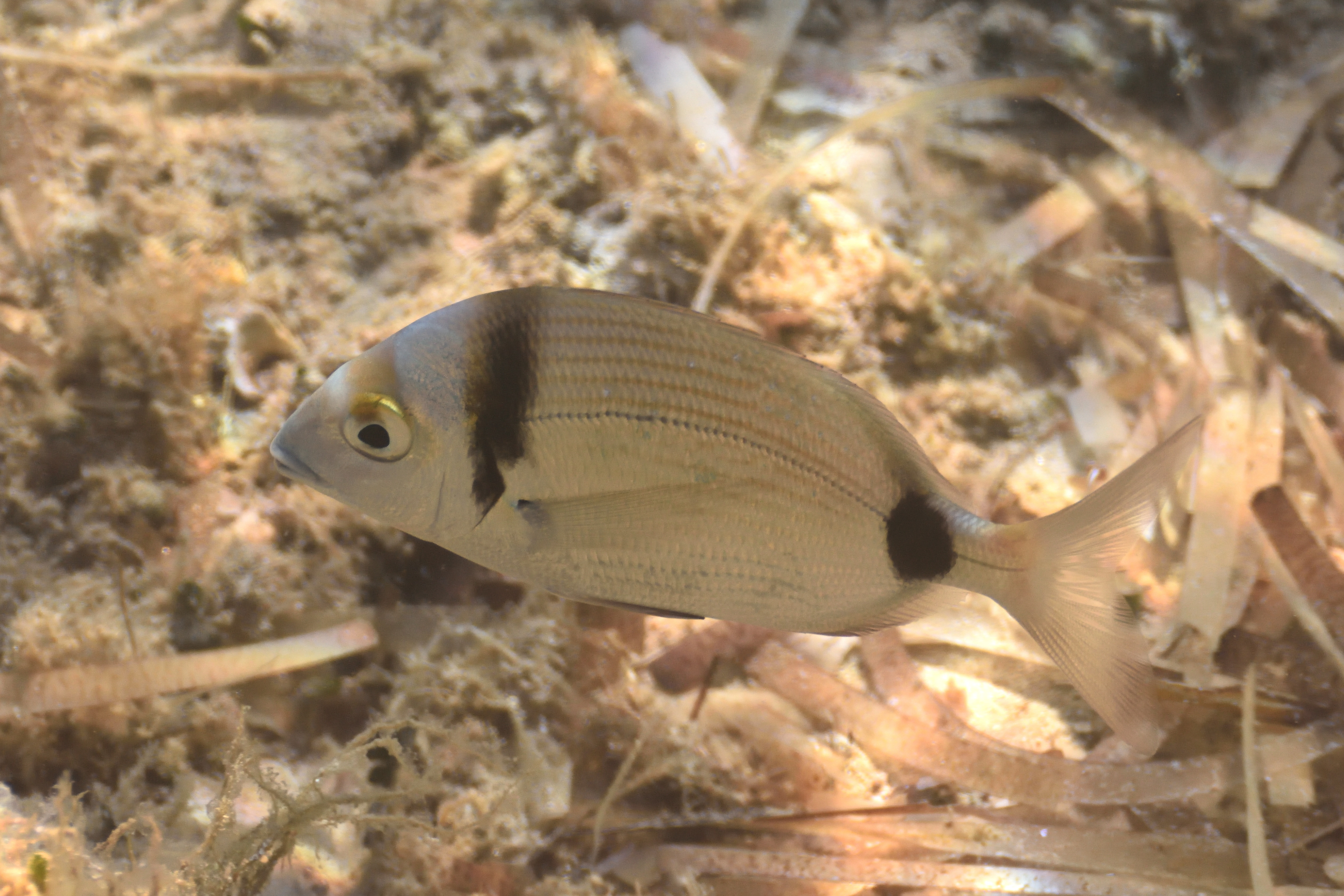

Introduction
The common two-banded seabream, Diplodus vulgaris, is a common fish in the rocky coastal areas of Europe. It is found from the bay of Biscarosse (Southwest France) to Cape Verde, in the Mediterranean Sea, and along the coasts of South Africa.
Who is it?
Morphology
-
Type
-
Average size22 cm
-
Maximum size45 cm
-
ShapeOvoid
-
Patternvertical stripes
-
Type
-
Average size22 cm
-
Maximum size45 cm
-
ShapeOvoid
-
Patternvertical stripes
How to recognize This fish ?
As its name suggests, this species is easily identifiable by the black spot above its pectoral fins. The coloration is light gray with silvery and yellowish highlights. It is covered in very fine horizontal stripes ranging from brown to black.
Similar to the common two-banded seabream, it has a flat body and its caudal fin is edged in black. It grows to between 22 and 45 centimeters as adults, but specimens over 30 centimeters are rare. This could be due to fishing pressure.
Sexual dimorphism
Males and females are not easily distinguishable.
Behaviour & Life cycle
-
dietcarnivorous
-
Sociabilityliving in a group or alone
-
territorialNo
-
Way of livingdiurnal
The common two-banded seabream lives in schools or small groups. Occasionally, individuals may be seen alone. It appears to be less aggressive towards conspecifics than the common two-banded seabream.
In the wild, adults feed on crustaceans, worms, and mollusks. Young seabreams find various meaty foods in the seagrass beds where they take refuge.
Reproduction
This species is believed to be hermaphroditic.
Sexual maturity is reached at around 17 centimeters, after 4 years. The breeding season extends from October to February.
Harmless species
This species does not pose any particular danger to humans when encountered in its natural habitat.
Origin and distribution
What is its habitat?
Natural environment characteristics
-
Depth1 - 100 m
-
FlowStrong
Biotope presentation
This species generally lives at depths of less than 50 meters. Juveniles and young adults live near seagrass beds and in shallow rocky areas.
Species of the same biotope
Fishkeeping
Not recommended
We do not recommend keeping this species in an aquarium. It has unpredictable needs which, if not met, generate significant stress, potentially leading to a shorter life expectancy, an interruption of its growth or the development of pathogens.
To go further
Sources & Contributions
Participation & Validation
The Fishipedia team and specialist contributors are committed to providing high-quality content. However, although the information comes from scientific sources or testimonials from specialists, the cards may contain inaccuracies.

Benoit Chartrer

Julie Magnus

Silvia Gomez
Translation
Translation done with the valuable contribution of our translators, who make this information available to a wider audience. We sincerely thank them for their commitment.
Bibliographic references
Reproductive biology of four Diplodusspecies Diplodus vulgaris, D. annularis,D. sargus sargus and D. puntazzo (Sparidae)in the Gulf of Tunis (central Mediterranean) - N. Mouine - P. Francour - M.H. Ktari - N. Chakroun-Marzouk - Marine Biological Association of the United Kingdom - 2012.
SPARIDAE - K.E. Carpenter - FAO Fisheries Synopsis - 0.
Scientific partners
Tags
Species of the same family
Same genus
Species of the same biotope
